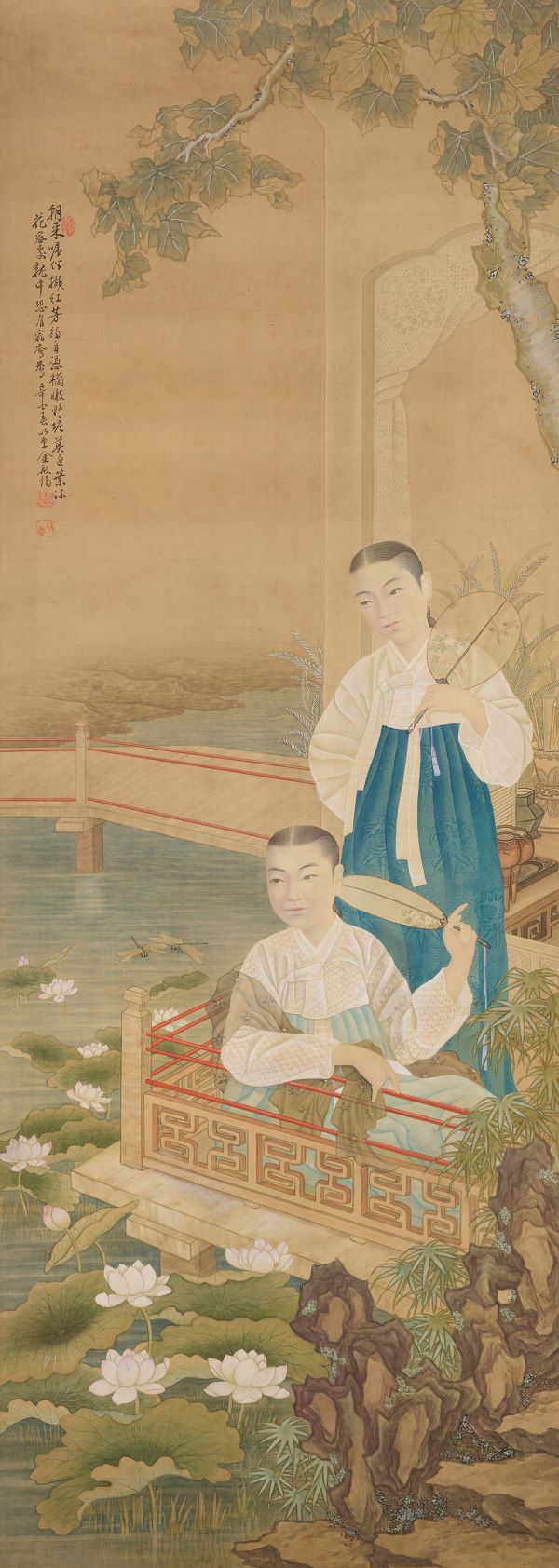
Kim Eunho, Beauties with Lotus Flowers, 1921, Color on silk, 144×51.5. MMCA collection
Kim Eunho
* Source: Multilingual Glossary of Korean Art. Korea Arts Management Service
Related
-
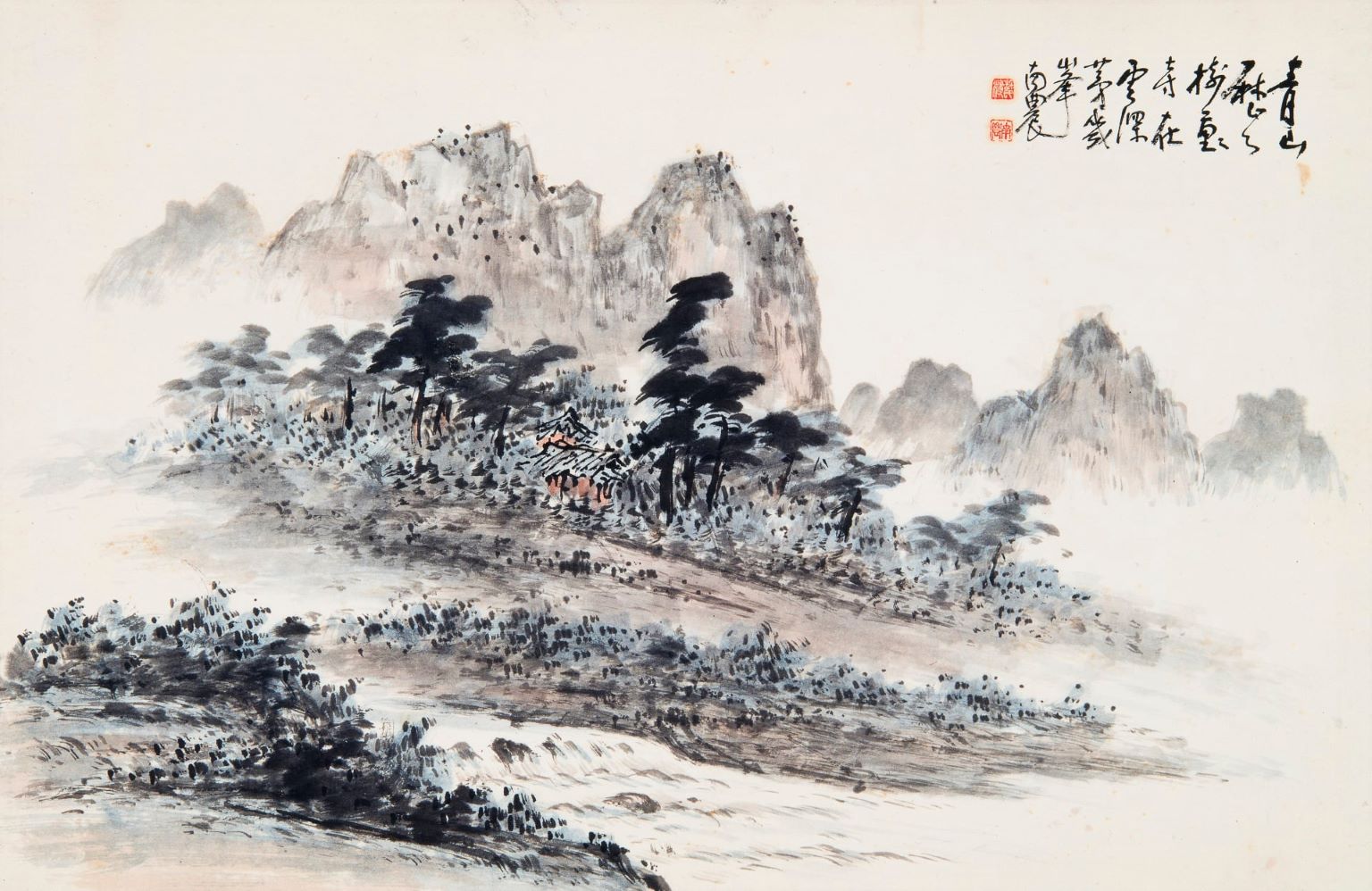
Eastern painting
Eastern painting (dongyanghwa) refers to the overall body of works created using traditional East Asian materials and methods, in contrast to Western painting. In Korea, Byeon Yeongro’s essay “On Eastern Painting” published in Dong-A Ilbo on 7th, July, 1920 was the first use of the term. The term then began to be used in Japan first to distinguish Oriental style paintings from Western ones. Until the late Joseon era, both calligraphy and painting were categorized under the term seohwa, but during the Japanese occupation of Korea in 1922, the first Joseon Art Exhibition [Joseon misul jeollamhoe] divided the painting section into Western and Eastern styles. Thereafter, the term Eastern-style painting entered official use in the country. After independence, the National Art Exhibition (Gukjeon) continued to use the term “Eastern painting,” but since 1970, numerous arguments were made to replace it with "Korean painting," because the term was imposed unilaterally during the Japanese colonial era.
-
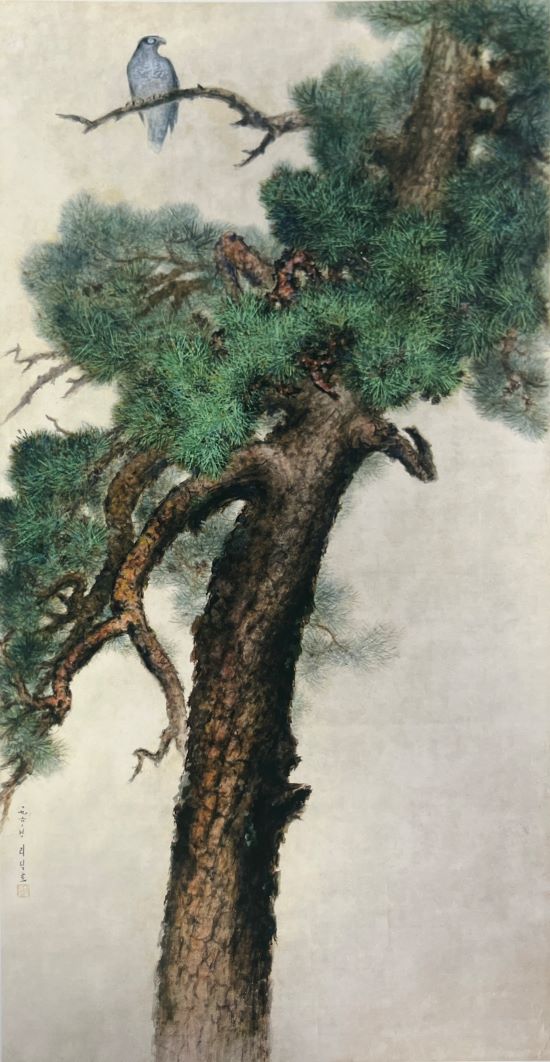
Lee Seokho
Lee Seokho (1904-1971, pen name Ilgwan) learned Chinese classics and calligraphy at a young age and then studied painting under Kim Eunho. He received an honorable mention for his calligraphy at the sixth Joseon Art Exhibition [Joseon misul jeollamhoe] in 1927. He then made his presence known in Korean painting circles by submitting his works to the exhibition of the Calligraphy and Painting Association [Seohwa hyeophoe] and to the Eastern painting section of the Joseon Art Exhibition. He enjoyed creating detailed polychrome bird-and-flower paintings under the influence of Kim Eunho. He was active in the artist group Husohoe together with Kim Eunho’s other disciples, including Chang Woosoung, Kim Kichang, and Lee Yootae. Upon Lee’s participation in the foundation of the Dangu Art Academy [Dangu misulwon] that aimed to establish national art in 1945, his painting style departed from polychrome painting and changed to “new literati painting” that reinterpreted traditional literati painting. Lee Seokho was exposed to Socialist ideas while working in the Anseong branch of Joseon Jungang Ilbo newspaper in the 1930s. While working in the painting division of the Korean Plastic Arts Federation [Joseon johyeong yesul dongmaeng] in 1946, he visited North Korea with Lee Qoede at the invitation of the Preparatory Committee for the Construction of the Liberation Tower in Gangwon-do Province. After the establishment of the government of the Republic of Korea in 1948, he immersed himself in artistic creations and holding exhibitions, such as Seven Eastern Painters (1948) and Two Eastern Painters: Goam and Ilgwan (1949). However, when the Korean War broke out, Lee came to belong to the Joseon Material Culture and Relics Conservation Committee [Muljil munhwa yumul bojon wiwonhoe] affiliated with the North Korean People’s Army and was assigned the task of transporting South Korean cultural heritage items to North Korea. As Seoul was recaptured by the South Korean army, he defected to North Korea along with the North Korean People’s army. In North Korea, he was an active member artist of the Korean Artist Federation [Joseon misulga dongmaeng] and taught Joseon (Korean) painting at the Pyongyang Art University. Beginning in the late 1950s, he traveled to several overseas countries including Vietnam and Moscow, which raised his status as an artist. In 1959, he was elected a chairman of the Joseon painting division of the Korean Artist Federation. In the 1960s when discourse on polychrome painting occurred in North Korea, he sought a painting style integrating polychrome painting. After his death, as the boneless brush technique used in Joseon painting was reevaluated by Kim Il-sung, his A Pine Tree (1966) was designated as a national treasure. A two-person exhibition was held for Lee Seokho and U Chiseon in 1988 followed by his solo exhibition in 1989. In 1992, Painting Album of the Joseon Painter Rhee Seokho was published.
-

hangukhwa
A type of painting created during the 20th century that uses traditional Korean materials, techniques, and styles. The term emerged from the criticism that traditional-style paintings were called Eastern paintings in Korea, in contrast to China, where they were called national-style paintings, and Japan, where they were called Japanese-style paintings. The term hangukhwa (Korean Painting) entered official use following the overhaul of the educational curriculum in December 1981, and the appearance of the term Korean painting, with the subcategories ink wash painting [sumukhwa] and ink and light-colored painting [damchaehwa] were listed in art textbooks from 1983. The Grand Art Exhibition of Korea also began using the term hangukhwa (Korean Painting), as opposed to Eastern painting, in 1982. Prior to this, Hankukhwahui (Korean Painter’s Association) was used as a collective term for such Korean painters in 1964 and Kim Youngki (pen name Chunggang) argued to use the term Korean painting to define national identity in his essay “On hangukhwa (Korean Painting) and Criticism.” Criticism that Korean paintings, unlike the national paintings of China and Japan, do not have a narrative theme, and that the use of such a term was contrary to contemporary artistic trends, resulted in the term “hangukhwa (Korean Painting)” failing to achieve mainstream use. Hangukhwa (Korean Painting) is currently used interchangeably with the term Eastern painting.
Find More
-
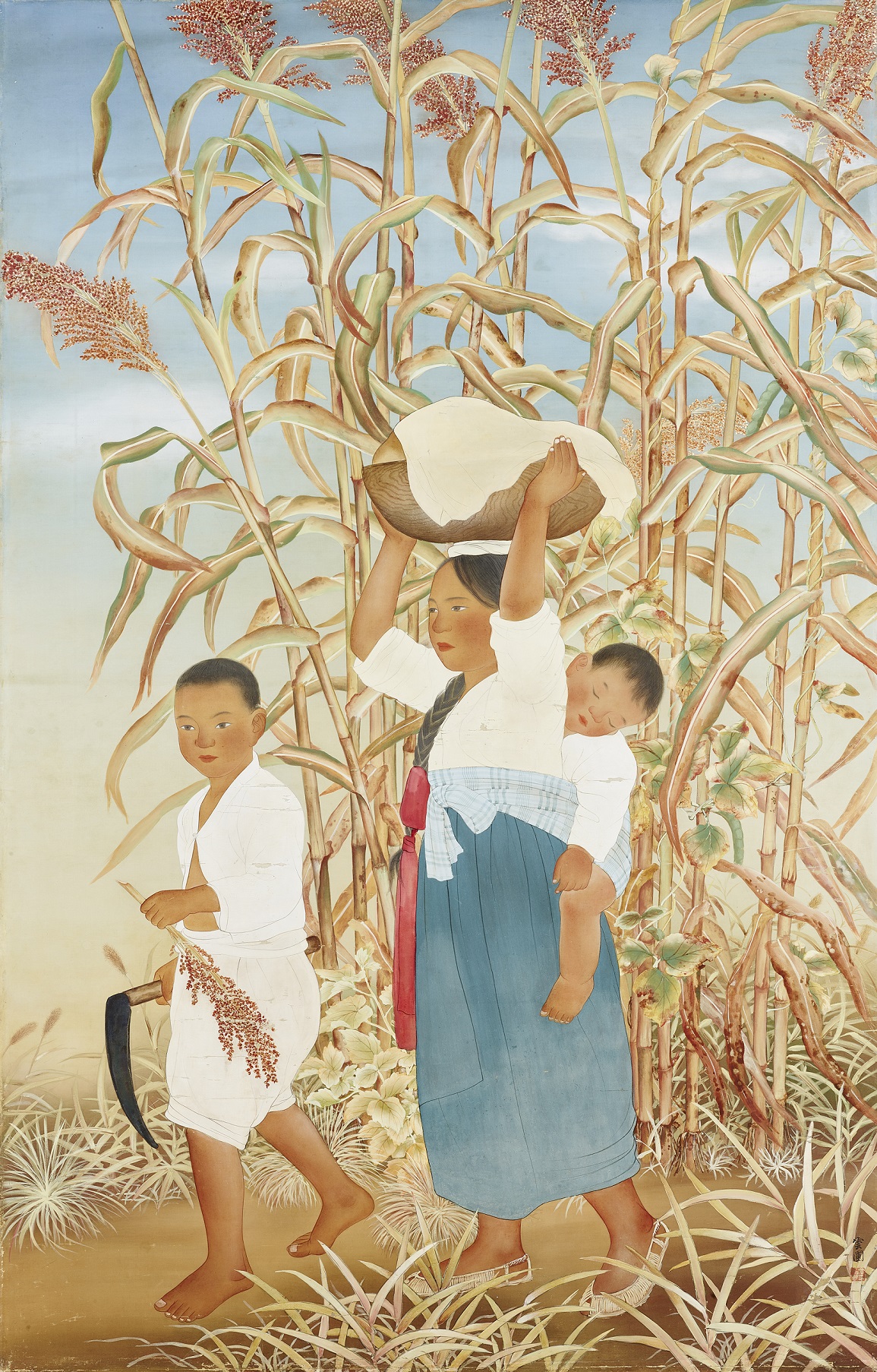
Kim Kichang
Kim Kichang (1913-2001, pen name Unpo or Unbo) studied Eastern painting at Kim Eunho’s art studio Nakcheongheon. After his debut in the tenth Joseon Art Exhibition [Joseon misul jeollamhoe] in 1931, he won special selections from 1937 to 1940, and became a renowned painter. He was appointed as the first president of Paek Yang Painting Association and became a professor at Hongik University and Soodo Women's Teachers College. He was awarded the Order of Civil Merit, Peony Medal in 1981 and the Korean Art Academy Award in 1983. After he passed away in 2001, he was awarded a posthumous Geumgwan Order of Culture Merit award. Although Kim initially focused on colorful figure paintings, following in the legacy of his mentor Kim Eunho, in his later career he collaborated with his wife Park Rehyun to modernize Korean painting by adopting cubism and abstraction. He reinterpreted traditional folk paintings in his representative works, such as Blue-green Landscape Painting series started in the 1970s and his Fool’s Landscape Painting in the 1980s and was inspired by portraits of historical figures. He contributed to the development of Korean modern art by working in an expanded formal territory from figuration to abstraction and addressing subject matter from folk painting, to figure and landscape painting.
-
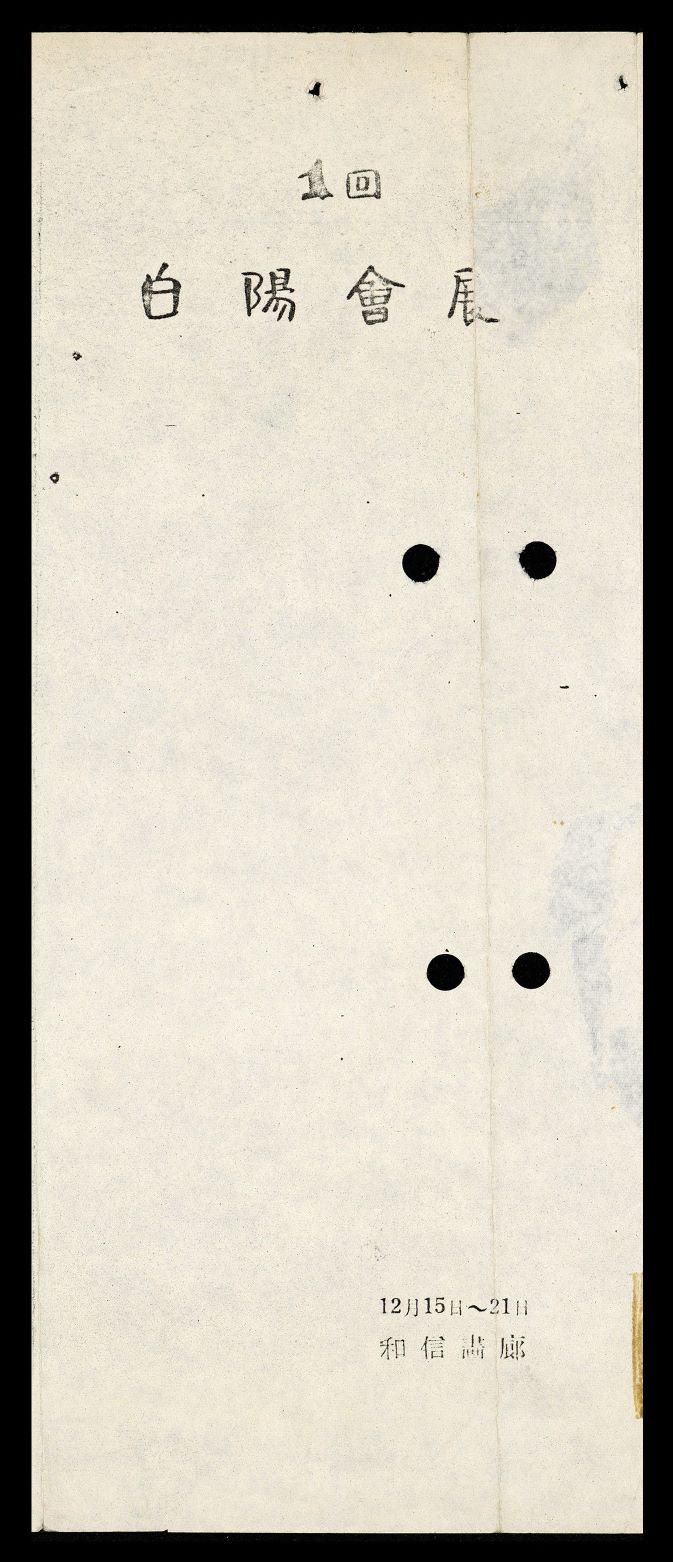
Paek Yang Painting Association
An art group formed in 1957 to explore new perspectives on Korean paintings and educate future artists. The group was formed by nine artists including Kim Kichang and Park Rehyun of the Husohoe (who were students of Kim Eunho, also known by his pen name I-dang), Kim Youngki, and Chun Kyungja. In January 1961, the group organized a touring exhibition in Southeast Asia, which is noteworthy as the first overseas exhibition held by a Korean private-sector art organization. In this traveling exhibition, the term “hangukwa (Korean painting)” was used for the first time to refer to traditional ink painting, instead of the previously dominant term “Eastern painting.”
-
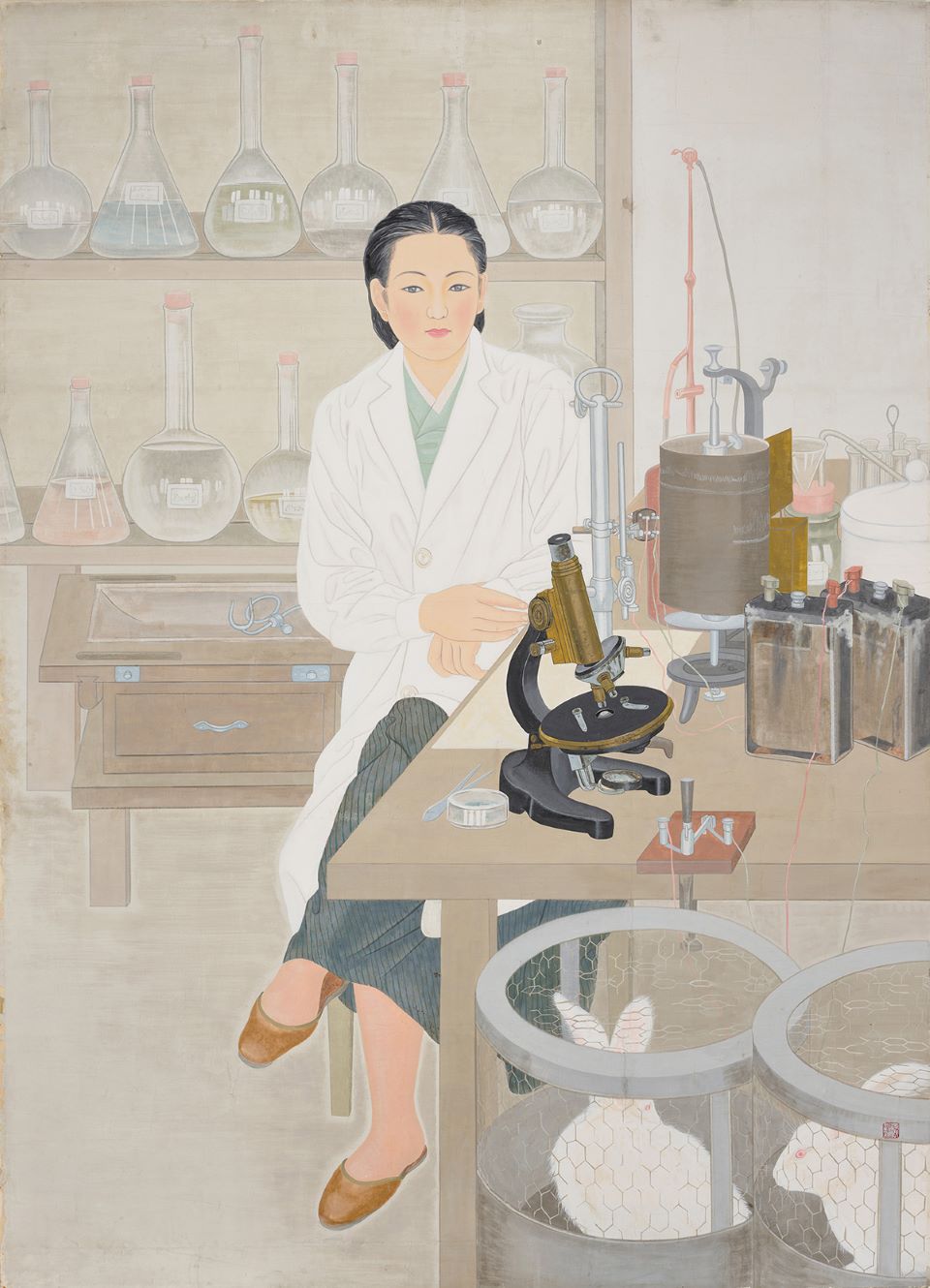
Lee Yootae
Lee Yootae (1916-1999, pen name Hyeoncho) learned painting from Kim Eunho in 1935 and participated in Husohoe, a group of Kim Eunho’s trainees, in 1936. He moved to Japan in 1938 to study at Kawasaki Ryuich’s art studio at the Imperial Academy of Fine Arts. He showed his potential by winning the government's general award and the Changdeokgung Palace award at the Joseon Art Exhibition [Joseon misul jeollamhoe] in 1943 and 1944, and then worked as a professor at Ewha Womans University from 1947 to 1979. He played a pivotal role in modern Korean painting Academism by holding various positions, such as a Noteworthy Artist at the 1955 National Art Exhibition, Invited Author, judge, and a member of the National Academy of Arts. He was also a main member of Paek Yang Painting Association from 1957 to 1975. After his studies in Japan, he excelled at female figure paintings by combining the realism of Western paintings, a classical academicist Estern painting technique, and the bright colors together. He was specially known for his female figures described, which were described as idealised representations of the modern era. After independence, he created grand landscape paintings depicting the natural beauty of Korea. By doing so, he demonstrated the value of a traditional approach to landscape painting using real scenery.






